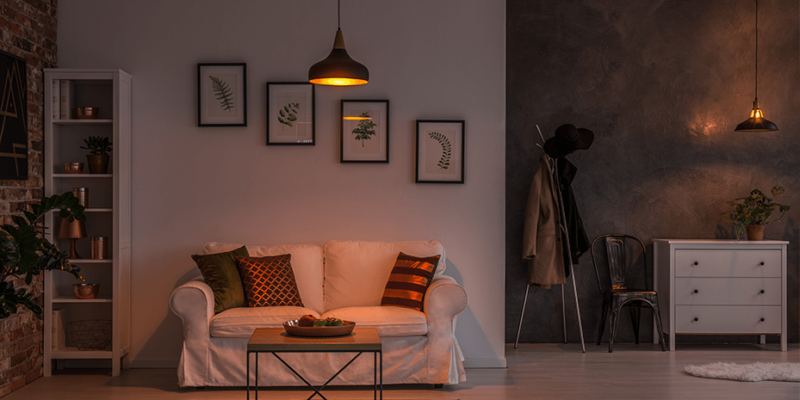Lighting plays a vital role in our everyday lives, influencing our emotions, actions, and overall well-being. Lighting also influences our hunger cues, sleep patterns, and circadian rhythm. Dimmable lighting and its impact on mood and health have gained attention as smart homes and sophisticated lighting technologies have grown in popularity.
Dimming refers to the ability to adjust a light source’s brightness. A dimmer switch, which lowers the electrical current flowing to the bulb, is typically used to achieve this effect. As a consequence, the light output is reduced, producing a more delicate and muted atmosphere.
Why Dimming Lights Is Beneficial

1. Create Moods And Atmospheres
One of the most important emotional benefits of dimming lights is that it may change the mood and environment of a room. Deep dimming allows you to tailor lighting to suit the atmosphere of any occasion, whether you’re preparing a romantic dinner, hosting guests, or enjoying a calm evening at home.
Deep dimming transforms ordinary rooms into personalized spaces by changing the brightness, color temperature, and even the direction of the light. Warm, soft light may make you feel comfortable and relaxed, while cooler, brighter light might give you energy or help you concentrate. This amount of control not only makes a place seem better, but it also helps with mental health and comfort.
2. Promote Relaxation
Deep dimming is an important part of making a space more comfortable and relaxing since it lets you adjust the brightness of the lights exactly. One of its most important emotional impacts is that it may make a space seem more comfortable by lowering the brightness, which reduces sharp shadows and glare.
This makes the space feel peaceful and welcoming, promoting relaxation. This kind of lighting works beautifully in spaces designed for rest and relaxation, such as living rooms, bedrooms, meditation areas, and spas, where a calm atmosphere is quite important.
Low-level lighting calms the mind, reducing stress and anxiety while fostering inner peace. It stimulates the mind and body to calm down, making it easier to unwind after a busy day. By cultivating a calm atmosphere, deep dimming significantly enhances mental well-being and overall comfort.
3. Evoke Emotional Responses
Additionally, by embracing the benefits of dimming lights to the intended mood or goal, deep dimming is quite good at evoking particular emotional reactions. Warm, soft lighting may evoke feelings of warmth, coziness, and even nostalgia, giving a room a cozy, familiar atmosphere.
Conversely, more vibrant, brighter lighting may infuse a room with vitality, energy, and inventiveness. Deep dimming makes it possible to precisely modify brightness and tone, giving designers the ability to subtly and purposefully influence a room’s emotional tone.
This emotional adaptability is particularly useful in settings where generating an emotionally impactful and immersive experience is crucial, such as museums, art galleries, and shopping establishments. Deep dimming strengthens the connection between people and their surroundings by aligning lighting with the space’s emotional purpose.
4. Personalize Lighting Experiences
Another significant element of deep dimming is its ability to create highly personalized lighting settings. Everyone has unique lighting preferences—some prefer soft, ambient light for relaxation, while others may require brighter, cooler tones for concentration or productivity.
Deep dimming allows the freedom to vary brightness, color temperature, and even the timing of light changes, enabling users to create individualized lighting scenarios that suit their mood, activity, or style. Whether it’s a comfortable evening at home or a concentrated work session, the ability to fine-tune lighting boosts both functionality and emotional enjoyment.
This level of customization generates a greater sense of connection to the area, boosting comfort, satisfaction, and even a feeling of control. As a consequence, deep dimming not only enhances illumination quality but also enriches the whole living experience.
5. Stress Relief
One of the most evident emotional benefits of dimming lights is its profound impact on stress reduction. Bright, harsh lighting may overstimulate the senses and maintain the body in a state of heightened attention, which typically adds to increased stress and anxiety.
In contrast, lowering the lights delivers soothing signals to the brain, urging it to rest and unwind. This change mirrors natural light patterns, such as sunset, which the body associates with rest and healing.
Imagine arriving home after a long, stressful day—simply dimming the lights in your living room may immediately create a serene ambiance, making you feel calmer and more at ease. This simple yet powerful adjustment transforms your surroundings into a sanctuary, helping you disconnect from daily stress and enhance emotional well-being.
6. Enhanced Comfort
Dim lighting is an excellent way to make people feel more comfortable and at ease in their surroundings. Unlike harsh, bright lighting that may seem clinical or overpowering, soft, subdued light produces a pleasant and welcoming ambiance.
It helps diminish sensory input, letting the body and mind rest naturally. Imagine the pleasant sensation of cuddling up beneath a blanket with a good book, surrounded by the soft glow of dimmed lights—it immediately generates a sense of serenity and security.
This style of lighting is excellent for settling down after a long day, enjoying peaceful moments alone, or spending meaningful time with family and friends. By fostering intimacy and peace, dim lighting transforms a space into a sanctuary—ideal for nighttime relaxation, quiet conversations, or simply appreciating the calm of your surroundings.
Read More: How To Overcome Emotional Barriers in Relationship
7. Better Sleep
The benefits of dimming lights in the evening play a significant role in helping your body shift into a peaceful state and prepare for sleep. Exposure to intense illumination, particularly in the hours before bedtime, may interfere with the body’s normal circadian rhythm by suppressing melatonin—the hormone responsible for regulating sleep.
This makes it tougher to relax and fall asleep. By progressively lowering the lights as the day winds down, you replicate the natural development of sunset, communicating to your brain that it’s time to slow down and relax.
This subtle shift stimulates melatonin production and fosters a sense of tranquility. Incorporating low lighting into your nightly routine, particularly in your bedroom, creates a serene atmosphere that promotes deeper relaxation and more restorative, uninterrupted sleep throughout the night.
8. Enhanced Focus And Mindfulness
While bright lighting is typically linked with alertness and productivity, reducing lights may actually boost attention and concentration, particularly during mindfulness techniques such as yoga or meditation.
Soft, low lighting naturally slows both body and mind, enabling a greater connection to the present moment. In contrast to bright situations that may overstimulate and distract, low lighting produces a tranquil, uncluttered area that supports mental clarity and emotional serenity.
For example, during meditation or mild yoga, lowering the lights helps eliminate visual distractions and encourage the brain to enter a more introspective, calm state. By fostering inner calm and presence, dim lighting becomes a strong tool for developing mindfulness, attention, and emotional balance.
The Impact of Dimmer Lighting on Visual Perception
Beyond emotional benefits, dimmed lights also shape a room’s atmosphere and influence how occupants perceive their surroundings. Softening the lighting may make spaces more aesthetically pleasing by lowering harsh shadows and glare.
This helps reduce eye strain, especially when reading or using digital screens for extended periods. Brighter lighting may increase energy levels, while softer lighting might encourage relaxation and lessen anxiety, according to research. Therefore, using lower lighting thoughtfully can promote both physical and mental comfort.
Lighting’s psychological effects extend beyond mood—they can also influence creativity and productivity. Dimmer lighting, for instance, can foster environments that promote creative thinking and make people feel more relaxed and open to new ideas.
Furthermore, a space’s entire experience is greatly influenced by the color temperature of dimmable lights. While colder tones may improve alertness and attention, making them appropriate for offices, warmer tones can arouse emotions of comfort and warmth, making them perfect for living rooms and bedrooms.
This flexibility in light quality enables a customized approach to interior design, where lighting may be changed to suit each room’s function, improving both usability and visual appeal.
FAQ
Q: What impact does low lighting have on mood?
A: A more intimate and laid-back mood is produced by dim illumination. It may provide a sense of tranquility and is often used to promote relaxation in living rooms, lounges, and bedrooms. However, some people may experience sorrow or despair as a result of very dark illumination.
Q: What advantages can low light offer?
A: This is particularly helpful while you are reading or working or doing other things that need concentration. Dimmable lighting is especially appropriate for bedrooms and leisure areas, as it may also encourage calmness and better sleep.
Q: What effects does low light have on the brain?
A: Long-term dim light exposure resulted in dramatic decreases in dendritic spines, or the connections that enable neurons to “talk” to one another, and brain-derived neurotrophic factor, a peptide that supports the maintenance of healthy connections and neurons in the hippocampus.











